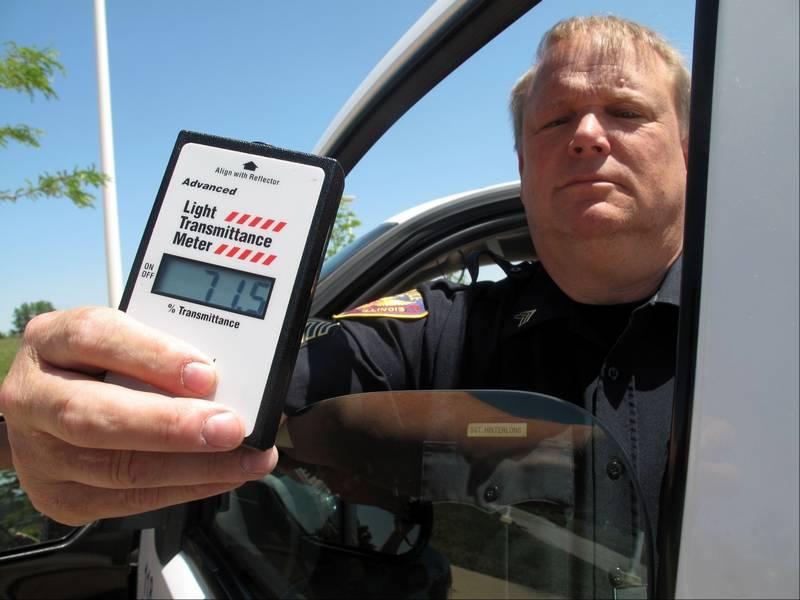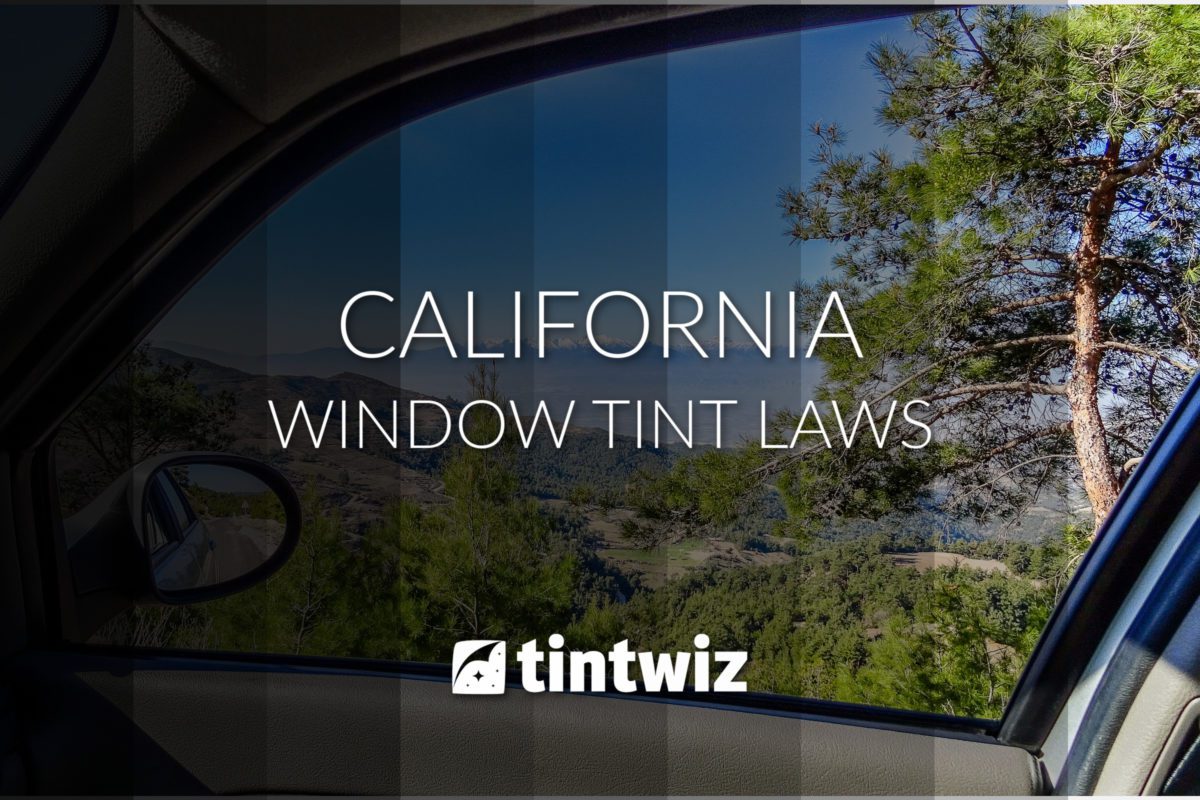As an Amazon Associate, I earn from qualifying purchases
Window tinting is popular in California for style and privacy. But strict laws govern how dark your windows can be.
California car owners need to understand these tinting laws. Breaking them can lead to fines and penalties. The state’s regulations aim to keep drivers safe while maintaining visibility. This blog post will explain the key points of California’s window tint laws.
You’ll learn what’s allowed and what’s not. We’ll also cover the reasons behind these laws. This way, you can make informed choices about tinting your car windows. Let’s dive in and ensure you stay compliant with the law.

Credit: www.acutintpro.com
California Tint Laws Overview
Understanding California’s tint laws is essential for any car owner. These laws regulate how dark and reflective your car windows can be. Complying with these rules ensures you avoid fines and keep visibility clear for safe driving.
Tint Percentage Restrictions
The percentage of light that can pass through your window is known as the Visible Light Transmission (VLT) percentage. In California, the VLT percentage differs for various car windows.
| Window | VLT Percentage |
|---|---|
| Front Side Windows | 70% or more |
| Rear Side Windows | Any darkness |
| Back Window | Any darkness |
| Windshield | Top 4 inches |
Front-side windows must allow at least 70% of light in. Rear side windows and the back window can be any darkness. The windshield can only have tint on the top 4 inches.
Allowed Tint Colors
California law restricts certain tint colors. The following colors are not allowed:
- Red
- Amber
- Blue
Stick to neutral colors like gray, black, or green. These colors comply with state regulations.
Using acceptable tint colors ensures your car remains street-legal.
Front Side Windows
California car laws are strict about window tinting, especially for front-side windows. Understanding these laws is crucial for avoiding fines and ensuring safety. This section will guide you through the legal tint levels and tips for compliance.
Legal Tint Levels
California law states that front-side windows must allow more than 70% of light in. This ensures visibility and safety for both drivers and pedestrians. Any tint level below this is illegal and can result in fines.
Compliance Tips
To comply with California tint laws, get your tint installed by a professional. They will ensure the tint level meets legal requirements. Regularly check your tint to ensure it hasn’t degraded over time. If you replace your windows, make sure the new tint complies with the law.
Rear Side Windows
Understanding the laws for tinting rear side windows in California is important. These regulations ensure safety and visibility for all drivers on the road. This section covers the tinting rules and popular tint choices for rear side windows in California.
Tinting Regulations
California law allows any darkness for rear side windows. However, the tint must not be reflective. Reflective tints can cause glare and reduce visibility for other drivers. Always ensure the tint is compliant with state regulations. This helps avoid fines and ensures safety.
Popular Tint Choices
Many car owners prefer ceramic tint for the rear side windows. Ceramic tint blocks heat and UV rays effectively. It also maintains clarity and reduces glare. Another popular choice is carbon tint. Carbon tint provides a sleek look and blocks infrared light. It does not fade over time. Dyed tint is also common. It is affordable and provides good privacy. However, it may fade faster than other types.
Consider your needs and preferences before choosing a tint. Ensure it complies with California laws. This ensures safety and legality on the road.
Rear Window
The rear window of your car can be tinted, but California has specific laws. Understanding these laws can help you avoid fines. Let’s dive into the requirements for rear window tinting in California.
Permissible Tint Levels
California allows a certain level of darkness for rear window tints. You can have any tint of darkness for the rear window. This gives you flexibility in choosing your tint. But remember, it should not impair visibility for safe driving.
Visibility Requirements
Even with darker tints, visibility is crucial. The tint should allow clear visibility for the driver. This ensures safety on the road. The law requires that the rear window tint must not obstruct the driver’s view. Your rear window should be clear enough to see vehicles and obstacles.
Windshield Tinting
Windshield tinting in California has specific rules. These ensure safety and visibility. The front windshield must allow clear visibility. This keeps drivers safe on the road. Understanding these rules helps avoid fines and penalties.
Tint Strip Rules
California law allows a tint strip on the windshield. It must be at the top. The strip cannot extend lower than four inches. This is known as the AS-1 line. The tint must be non-reflective. This prevents glare and ensures clear vision.
Medical Exemptions
Some drivers need special tinting for medical reasons. California allows medical exemptions. A doctor must provide a written statement. This document should explain the medical need. The statement must be kept in the vehicle. It should be shown to law enforcement if asked.

Credit: www.californiacarlaws.com
Penalties For Non-compliance
Understanding the Penalties for Non-Compliance with California’s tint window laws is crucial. Non-compliance can lead to various consequences, including fines and the need for corrective actions. This section outlines what you need to know about these penalties.
Fines And Consequences
The fines for violating California’s tint window laws can vary. Typically, a first offense results in a fine of $25. However, additional fees can quickly increase the cost. For repeat offenders, the fines can be much higher. Courts may also impose other penalties, such as community service. Below is a table summarizing potential fines and consequences:
| Offense | Fine | Additional Consequences |
|---|---|---|
| First Offense | $25 | Possible additional fees |
| Second Offense | Up to $197 | Higher fines and court fees |
| Third Offense | Up to $250 | Community service, higher court fees |
Corrective Actions
If you receive a ticket for non-compliant window tinting, you must take corrective actions. This usually involves removing or adjusting the tint to meet legal requirements. Here are the steps you should follow:
- Remove the illegal tint from your car windows.
- Take your car to a certified inspection station.
- Get a certification of compliance.
- Submit proof of correction to the court.
Failing to take these corrective actions can lead to further fines and complications. Always ensure your vehicle’s window tint complies with California state laws. This avoids potential legal issues and keeps you safe on the road.
Choosing The Right Tint
Choosing the right tint for your car windows involves more than just style. In California, strict laws govern the level of tint you can apply. Understanding these laws will help you make an informed decision. This ensures you stay within legal limits and enhance your car’s appearance.
Balancing Style And Legality
Car window tinting adds a sleek look. It also offers privacy and UV protection. Yet, California law sets specific rules for tint levels. Front-side windows must allow over 70% of light in. Rear windows can be darker, but must not impair visibility. Knowing these limits helps you balance style and legality.
Going too dark can lead to fines and tickets. It also impacts your safety by reducing visibility. Choose a tint that complements your car and follows the law. This way, you enjoy the benefits without any legal issues.
Professional Installation
Professional installation ensures your tint meets legal standards. Experts know the exact regulations and how to apply the tint correctly. This avoids bubbles, peeling, and other issues. A well-applied tint lasts longer and looks better.
DIY kits might seem cost-effective. But improper installation can lead to problems. Professional installers use quality materials and have experience. This guarantees your tint not only looks great but also complies with California car tint laws.

Credit: tintwiz.com
Frequently Asked Questions
What Are California Car Tint Laws?
California law restricts window tint darkness. Front side windows must allow over 70% light. Rear windows can be darker.
Can You Tint Front Windows In California?
Yes, but front side windows must have a light transmittance of at least 70%. Compliance is essential.
Are Tinted Windows Legal In California?
Yes, but they must follow specific light transmittance rules. Front windows require at least 70% light visibility.
What Is The Penalty For Illegal Window Tint In California?
Penalties include fines and mandatory removal of illegal tint. Repeat offenses may result in higher fines.
Conclusion
Understanding California’s car tint laws is essential for all drivers. Compliance ensures safety and avoids fines. Tinted windows offer privacy and UV protection. But following legal guidelines is crucial. Always check the latest regulations before tinting. This will save you time and money.
Stay informed and drive safely with the right window tint. Safe driving!
As an Amazon Associate, I earn from qualifying purchases


